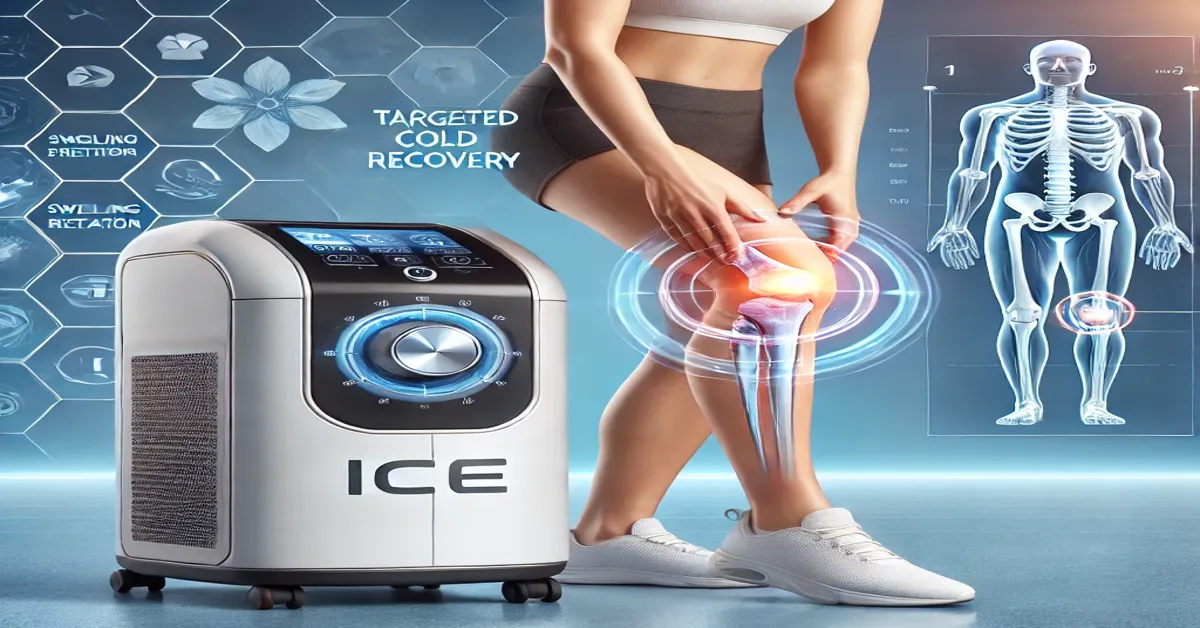Recovering from knee surgery can be a challenging journey, often accompanied by swelling, pain, and discomfort. One of the most effective tools for managing these post-surgical symptoms is an ice machine for knee surgery. This device has become an essential part of many recovery plans, offering patients a convenient and efficient way to reduce inflammation and improve mobility. In this article, we will explore the benefits of using an ice machine for knee surgery, discuss its role in recovery, and provide guidance on selecting and using the right device to maximize your rehabilitation process.
What is an Ice Machine for Knee Surgery?
An ice machine for knee surgery is a medical device designed to deliver consistent, controlled cold therapy to the affected knee area. Unlike traditional ice packs, these machines circulate cold water through a pad or wrap that fits around the knee. This consistent application of cold reduces swelling, alleviates pain, and accelerates healing by slowing down cellular metabolism and minimizing tissue damage.
Key Features
- Continuous Cooling: Ensures a steady flow of cold therapy without the need to replace ice packs frequently.
- Adjustable Temperature Control: Allows patients to customize the level of cooling for their comfort.
- Ease of Use: Lightweight and portable designs make these machines easy to operate and move.
- Targeted Therapy: Wraps or pads are specifically designed to conform to the knee, delivering cold therapy exactly where it is needed.
Why is Cold Therapy Important After Knee Surgery?
Cold therapy has long been a staple in injury and post-surgical recovery protocols. Here’s why it is so effective, especially after knee surgery:
- Reduces Swelling and Inflammation: By constricting blood vessels, cold therapy helps minimize swelling in the knee joint.
- Pain Relief: The cooling effect numbs the nerves in the area, providing significant pain relief.
- Prevents Secondary Tissue Damage: Slowing down cellular metabolism reduces the risk of further tissue damage caused by inflammation.
- Improves Mobility: Reduced swelling and pain enable patients to move their knee more freely, aiding in faster recovery.
- Enhances Rehabilitation: Cold therapy can improve patient compliance with physical therapy by alleviating pain and swelling, making exercises more manageable.
Benefits of Using an Ice Machine for Knee Surgery
While traditional ice packs can provide temporary relief, an ice machine for knee surgery offers several advantages:
1. Consistent and Prolonged Cooling
- Unlike ice packs that melt and lose their effectiveness quickly, ice machines provide continuous cooling for extended periods, ensuring maximum therapeutic benefit.
2. Targeted Application
- The wrap or pad that comes with the machine is designed to fit the knee perfectly, ensuring the cold therapy is delivered precisely where it is needed.
3. Convenience
- Patients don’t have to constantly replace or adjust ice packs. The machine does the work, allowing users to focus on resting and healing.
4. Customizable Settings
- Adjustable temperature and flow rate allow patients to tailor the therapy to their specific needs and comfort levels.
5. Enhanced Safety
- Many ice machines include timers and temperature controls to prevent the risk of frostbite or overcooling.
How to Use an Ice Machine for Knee Surgery Recovery
Proper use of an ice machine is essential for maximizing its benefits. Follow these steps for optimal results:
1. Set Up the Machine
- Fill the reservoir with cold water and ice according to the manufacturer’s instructions.
- Attach the cooling pad to the machine using the provided hoses.
2. Position the Pad
- Wrap the cooling pad around the knee, ensuring it covers the surgical site completely.
- Secure the pad in place using straps or Velcro.
3. Adjust Settings
- Set the desired temperature and flow rate. Start with a moderate setting and adjust as needed.
4. Monitor the Therapy
- Use the machine for 20-30 minutes at a time, several times a day, as recommended by your doctor.
- Check your skin periodically to ensure there are no signs of frostbite or irritation.
5. Clean and Maintain
- After each use, empty the reservoir, clean the machine, and allow it to dry to prevent bacteria buildup.
Choosing the Right Ice Machine for Knee Surgery
With so many options on the market, selecting the best ice machine can be overwhelming. Here are some factors to consider:
1. Size and Portability
- Choose a machine that is lightweight and easy to move, especially if you plan to use it in different locations.
2. Durability and Quality
- Look for machines made from high-quality materials that can withstand repeated use.
3. Ease of Use
- Opt for a machine with simple controls and clear instructions.
4. Adjustability
- Ensure the machine offers adjustable temperature and flow rate settings to meet your needs.
5. Cost and Insurance Coverage
- Check whether the machine is covered by your insurance or if it fits within your budget.
Tips for Optimizing Recovery with an Ice Machine for Knee Surgery
To get the most out of your recovery, combine the use of an ice machine with these tips:
- Follow Your Doctor’s Advice: Adhere to the recommended therapy schedule and settings.
- Stay Hydrated: Proper hydration supports overall healing.
- Engage in Physical Therapy: Use cold therapy to manage pain and swelling before and after exercises.
- Maintain a Balanced Diet: Nutrient-rich foods promote faster recovery.
- Rest and Elevate Your Knee: Combine cold therapy with proper rest and elevation to reduce swelling.
Common Misconceptions About Ice Machines for Knee Surgery
Despite their effectiveness, there are several misconceptions about ice machines:
- They’re Only for Severe Pain: Cold therapy is beneficial for all levels of post-surgical discomfort.
- They Replace Physical Therapy: Ice machines complement physical therapy but do not replace it.
- They Are Difficult to Use: Most modern machines are user-friendly and come with detailed instructions.
- Any Cold Source Works the Same: Ice machines provide consistent and controlled cooling, which is more effective than traditional methods.
Conclusion
An ice machine for knee surgery is an invaluable tool for enhancing recovery, reducing pain, and improving mobility. By providing consistent, targeted cold therapy, these devices accelerate healing and make the post-surgical journey more manageable. Whether you’re recovering from a total knee replacement, ACL repair, or any other knee procedure, investing in a high-quality ice machine can significantly improve your rehabilitation process. With proper use and care, this device can help you get back on your feet faster and with less discomfort.
FAQs
1. What is an ice machine for knee surgery, and how does it work?
- It is a medical device that delivers continuous cold therapy to the knee, reducing swelling and pain after surgery.
2. How often should I use an ice machine after knee surgery?
- Typically, you should use it 3-4 times a day for 20-30 minutes each session, as recommended by your doctor.
3. Are ice machines better than traditional ice packs?
- Yes, they provide consistent and prolonged cooling, targeted application, and customizable settings for better results.
4. Can I rent an ice machine for knee surgery recovery?
- Many medical supply stores and clinics offer rental options, making it an affordable choice for temporary use.
5. Are there any risks associated with using an ice machine?
- When used properly, the risks are minimal. However, overcooling or improper use can lead to frostbite or skin irritation.
6. What should I look for when buying an ice machine?
- Consider size, portability, durability, ease of use, adjustability, and cost when selecting the right machine for your needs.











